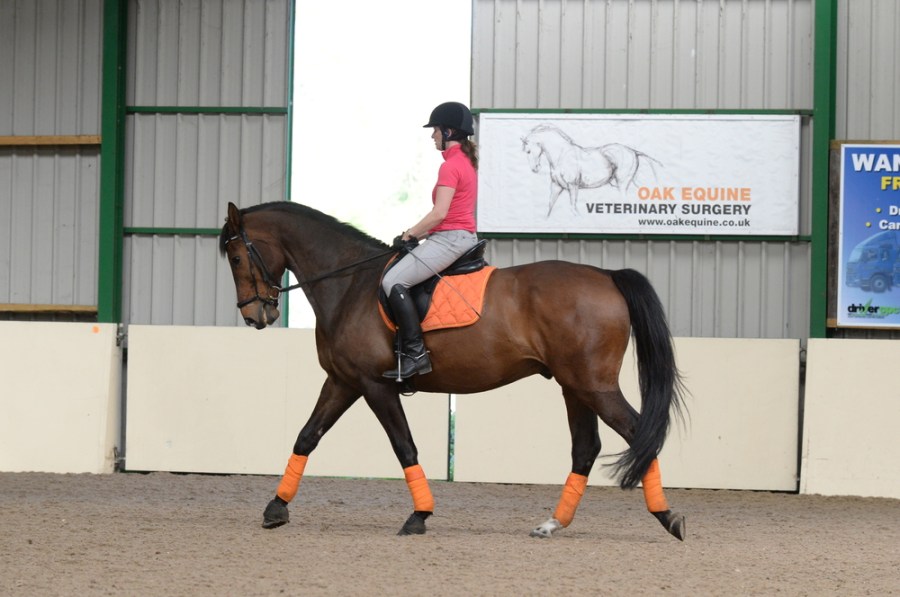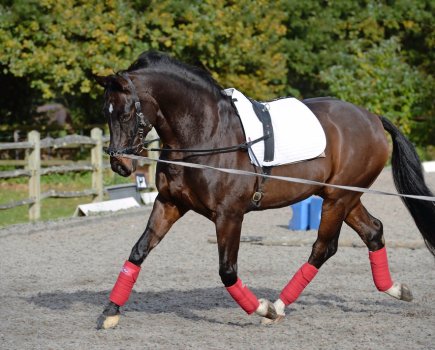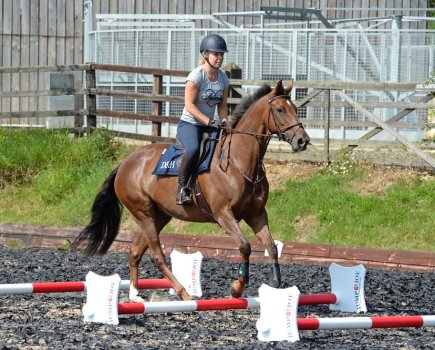If you compete in dressage, or you plan to in the future, it’s likely that your horse will be asked to transition from a free walk to a medium walk in a test. It’s not necessarily as easy as it sounds and some horses naturally find it easier to do than others.
Your horse may be reluctant to collect or tempted to jog, or not take the contact down and forward enough in the free walk. It’s easy to lose marks here — and correct training at home will help put you in the best position to score the higher marks. Dressage judge and trainer Alex Gingell shares his tips on how to make the transition seamless.
What is medium walk?
Medium walk is expected in all dressage tests — starting at intro level. The horse should stride forward with purpose (think marching) and the rhythm should be regular and relaxed, but with energy. The judge will be looking to see that the footfalls are correct and the rhythm is consistent.
What is free walk?
Free walk on a long rein appears in dressage tests from the lower levels too. The horse should be relaxed and you should allow enough rein for them to take their head and neck down and forward, really stretching out. They should have complete freedom of their shoulder and the footfalls should remain correct, with a clear overtrack.
The key is that the horse is relaxed but marching purposely, while taking the contact forward.
Still not sure? Watch our video guide that explains each of the different walks.
What does the judge want to see?
“Judges like to see a noticeable shortening in the frame of your horse, usually within two and four walk strides while passing the correct marker,” explains Alex. “The poll should be the highest point, with the nose on, or slightly in front of, a vertical line from your horse’s forehead to the ground.
“The contact should be elastic and light, but stable. The rhythm of the walk should be constant. The horse’s hocks should be engaged and carrying more weight than in the free walk.”
How can it be practised?
- Practise riding a free walk to a medium walk, and then halt.
- Ride free walk to medium walk and then back to free walk. Vary it with free walk to medium walk to leg-yield, so your horse doesn’t know what’s coming next. This reduces the risk of him tightening and anticipating.
- If your horse is tense and likely to jog then don’t go for the maximum free walk — otherwise you run the risk of him jogging when you gather the reins. Instead, keep a little connection and only lengthen the frame a few inches, but still make the lengthening noticeable, with the steps becoming longer. This makes it easier to gather him up without jogging.
- Half-halt and test the connection for a few steps before you make the transition to medium walk.
- Breathe deeply, in through your nose and out through your mouth and keep your arms, shoulders and core relaxed.
- To gather the reins, creep them up with both hands, or hold both in one hand momentarily and shorten one before swapping and shortening the other. Practise both techniques and be able to do both in a test environment. Choose the method that best suits your horse and how he feels on the day.
Where are marks easily lost?
The judges don’t want to see:
- Hollowing
- Resistance
- A change in rhythm
- Breaking (jogging)
- Tension in the horse’s back
Meet the expert: Alex Gingell is a British Dressage list 4 judge and trainer. He and his wife Jayne founded and run Hack Up, an award-winning bespoke supplement company for horses.









